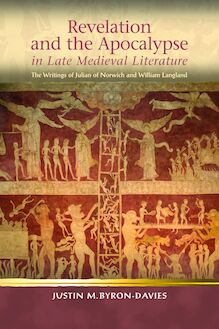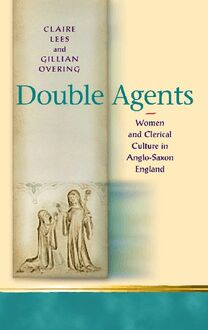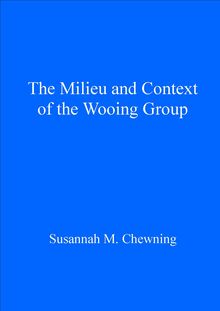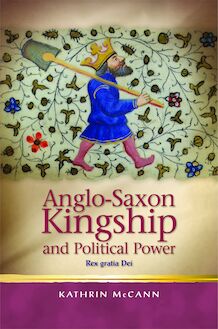-
 Univers
Univers
-
 Ebooks
Ebooks
-
 Livres audio
Livres audio
-
 Presse
Presse
-
 Podcasts
Podcasts
-
 BD
BD
-
 Documents
Documents
-
- Cours
- Révisions
- Ressources pédagogiques
- Sciences de l’éducation
- Manuels scolaires
- Langues
- Travaux de classe
- Annales de BEP
- Etudes supérieures
- Maternelle et primaire
- Fiches de lecture
- Orientation scolaire
- Méthodologie
- Corrigés de devoir
- Annales d’examens et concours
- Annales du bac
- Annales du brevet
- Rapports de stage
La lecture à portée de main
Vous pourrez modifier la taille du texte de cet ouvrage
Découvre YouScribe en t'inscrivant gratuitement
Je m'inscrisDécouvre YouScribe en t'inscrivant gratuitement
Je m'inscrisEn savoir plus
Vous pourrez modifier la taille du texte de cet ouvrage
En savoir plus

Description
Cultivating the Heart examines the nurturance of feeling – especially the intertwined affective stirrings of compassion, love, and sorrow – in a range of religious texts from the twelfth and thirteenth centuries. These texts encourage, stimulate, define and attempt to express the ‘cultivation of hearts’, an image inspired by Part VII of Ancrene Wisse, whereby readers and audiences of the texts nurture a range of sophisticated ‘affective literacies’. In addition to extensive analysis of English, Latin and Anglo-Norman texts, this book makes substantial reference to the affective strategies of wall paintings in parish churches, demonstrating how the affective strategies of wall paintings cannot be perceived as inferior to or irreconcilable with the affective import of textual media.
Introduction
Chapter 1: Upon a Spiritual Cross: Feeling in the Lambeth and Trinity Homilies
Chapter 2: The Gnawed Hand: Presence and Absence of Feeling in the Early South English Legendaries
Chapter 3: Co-feeling: Compassion in Ancrene Wisse and the Wooing Group
Chapter 4: Call Me Bitter: Feeling and Sensing in Passion Lyrics
Conclusion
Sujets
Informations
| Publié par | University of Wales Press |
| Date de parution | 15 juin 2015 |
| Nombre de lectures | 0 |
| EAN13 | 9781783162789 |
| Langue | English |
| Poids de l'ouvrage | 1 Mo |
Informations légales : prix de location à la page 0,0950€. Cette information est donnée uniquement à titre indicatif conformément à la législation en vigueur.
Extrait
RELIGION AND CULTURE IN THE MIDDLE AGES
Cultivating the Heart
Series Editors Denis Renevey (Universit de Lausanne) Diane Watt (University of Surrey)
Editorial Board Miri Rubin (Queen Mary University of London) Jean-Claude Schmitt ( cole des Hautes tudes en Sciences Sociales, Paris) Fiona Somerset (Duke University) Christiania Whitehead (University of Warwick)
RELIGION AND CULTURE IN THE MIDDLE AGES
Cultivating the Heart
FEELING AND EMOTION IN TWELFTH- AND THIRTEENTH-CENTURY RELIGIOUS TEXTS
A. S. LAZIKANI
A. S. Lazikani, 2015
All rights reserved. No part of this book may be reproduced in any material form (including photocopying or storing it in any medium by electronic means and whether or not transiently or incidentally to some other use of this publication) without the written permission of the copyright owner. Applications for the copyright owner s written permission to reproduce any part of this publication should be addressed to the University of Wales Press, 10 Columbus Walk, Brigantine Place, Cardiff CF10 4UP.
www.uwp.co.uk
British Library CIP Data A catalogue record for this book is available from the British Library. ISBN 978-1-78316-261-1 (hardback) 978-1-78316-264-2 (paperback) e- ISBN 978-1-78316-278-9
The right of Ayoush Sarmada Lazikani to be identified as author of this work has been asserted in accordance with sections 77 and 79 of the Copyright, Designs and Patents Act 1988.
C ONTENTS
Series Editors Preface
List of Illustrations
Acknowledgements
List of Abbreviations
Note on Editions and Translations
Introduction: Feeling in the High Middle Ages
1 Upon a Spiritual Cross: Feeling in the Lambeth and Trinity Homilies
2 The Gnawed Hand: Presence and Absence of Feeling in the Early South English Legendaries
3 Co-feeling: Compassion in Ancrene Wisse and the Wooing Group
4 Call Me Bitter: Feeling and Sensing in Passion Lyrics
Conclusion
Notes
Select Bibliography
S ERIES E DITORS P REFACE
Religion and Culture in the Middle Ages aims to explore the interface between medieval religion and culture, with as broad an understanding of those terms as possible. It puts to the forefront studies which engage with works that significantly contributed to the shaping of medieval culture. However, it also gives attention to studies dealing with works that reflect and highlight aspects of medieval culture that have been neglected in the past by scholars of the medieval disciplines. For example, devotional works and the practice they infer illuminate our understanding of the medieval subject and its culture in remarkable ways, while studies of the material space designed and inhabited by medieval subjects yield new evidence on the period and the people who shaped it and lived in it. In the larger field of religion and culture, we also want to explore further the roles played by women as authors, readers and owners of books, thereby defining them more precisely as actors in the cultural field. The series as a whole investigates the European Middle Ages, from c .500 to c .1500. Our aim is to explore medieval religion and culture with the tools belonging to such disciplines as, among others, art history, philosophy, theology, history, musicology, the history of medicine, and literature. In particular, we would like to promote interdisciplinary studies, as we believe strongly that our modern understanding of the term applies fascinatingly well to a cultural period marked by a less tight confinement and categorization of its disciplines than the modern period. However, our only criterion is academic excellence, with the belief that the use of a large diversity of critical tools and theoretical approaches enables a deeper understanding of medieval culture. We want the series to reflect this diversity, as we believe that, as a collection of outstanding contributions, it offers a more subtle representation of a period that is marked by paradoxes and contradictions and which necessarily reflects diversity and difference, however difficult it may sometimes have proved for medieval culture to accept these notions.
I LLUSTRATIONS
1 Passion Cycle on East Wall in St Mary s Church, Brook, Kent ( c .1260-80)
2 Passion sequence on South Wall in St Michael s Church, Great Tew, Oxfordshire ( c. 1290)
3 Passion sequence on South Wall of the nave of St Mary s Church, West Chiltington, Sussex ( c. 1250-75)
4 Detail of the Passion sequence in St Michael s Church, Great Tew, Oxfordshire ( c. 1290): Noli me tangere
All photographs are the author s own. The approximate dates follow those given by Anne Marshall in her Painted Church project: www.paintedchurch.org/ (accessed June 2013).
A CKNOWLEDGEMENTS
I am very grateful to many eminent scholars and editors for their generous interest in and feedback on this book as it has developed.
Most of all, I am very grateful to Dr Annie Sutherland for investing a great deal of her time reading through my work and offering so much invaluable feedback, both as my doctoral supervisor and in subsequent years. No student could have had a more caring or inspiring supervisor.
Professor Vincent Gillespie and Professor Elizabeth Robertson also invested much of their time as my doctoral examiners reading and correcting material that is now in this book. I very much appreciate the wealth of feedback they have given me, and all their kindness and encouragement both as my examiners and in subsequent years.
I am grateful to Professor Denis Renevey for his generous interest in this project and for all his many stimulating suggestions, and to Dr Helen Barr for her supportive and thoughtful comments on my work. Professor Bella Millett has taken the time to kindly answer my many queries on homilies, and I thank also the anonymous reader of my manuscript at the University of Wales Press for her valuable suggestions.
Dr Liz Herbert McAvoy and Dr Catherine Innes-Parker have, as always, shown me great kindness, and Dr Alexandra Da Costa and Dr Aditi Nafde have been so encouraging. I would also like to thank Dr Tony Hunt and Dr Jane Bliss for their very useful input on Anglo-Norman texts.
In its earlier stages as a doctoral thesis, this project was funded by the Arts and Humanities Research Council, and I am grateful to the AHRC for making this initial research possible.
Thank you very much to Bertie and Bissan for advice about photographing church wall paintings. I am so grateful to Maria for reading over parts of this book carefully, and for all her warm encouragement over the past years. And thank you so much to Sabina for all her support and friendship through this project s development.
This book is dedicated to the memory of my mother, Amal, and to my father, Muhydin - for everything they have done, and for which no words could ever be sufficient.
A BBREVIATIONS AASS Acta Sanctorum quotquot tot orbe coluntur, vel Catholicis Scriptoribus celebratur , ed. Jean Bolland et al., 68 vols (Brussels: Alphonsum Greise, 1863-1940) EETS Early English Text Society (1864-) O. S. Original Series (1864-) E. S. Extra Series (1867-1920)S. S. Supplementary Series (1970-) MED Middle English Dictionary , ed. by Hans Kurath and S. M. Kuhn (Ann Arbor: University of Michigan Press; London: Oxford University Press, 1952-) Online version (Michigan, 18 December 2001): http://quod.lib.umich. edu/m/med/ PL Patrologiae cursus completus: series Latina , ed. by J. P. Migne, 221 vols (Paris: Migne, 1844-55 and 1862-5) SEL South English Legendaries
N OTE ON E DITIONS AND T RANSLATIONS
Biblical References
Due to considerations of space, biblical references in most cases are to the Douay-Rheims translation, and not to the original Latin Vulgate (The Holy Bible, Douay Version: Translated from the Latin Vulgate (Douay, AD 1609: Rheims, AD 1582). London: Catholic Truth Society, 1956).
Editions of Middle English
All quotations are taken from the following editions:
I The Lambeth and Trinity Homilies
Lambeth homilies:
Old English Homilies , First Series, ed. Richard Morris, EETS O. S. 29, 34 (London, 1867-8).
Trinity homilies:
Old English Homilies , Second Series, ed. Richard Morris, EETS O. S. 53 (London, 1873).
Punctuation has been modernized.
II South English Legendaries
The Early South-English Legendary, or, Lives of Saints , ed. Carl Horstmann, EETS O. S. 87 (London, 1887).
III Ancrene Wisse and the Wooing Group
Ancrene Wisse: A Corrected Edition of the Text in Cambridge, Corpus Christi College, MS 402 with Variants from Other Manuscripts , ed. Bella Millett, 2 vols, EETS O. S. 325 and 326 (Oxford, 2005-6).
e Wohunge of ure Lauerd, etc. , ed. W. Meredith Thompson, EETS O. S. 241 (London, 1958).
Given the heavily diplomatic nature of Thompson s edition, the texts have been re-edited from the manuscripts, but page numbers to Thompson s edition are given for the reader s convenience. Abbreviations (with the exception of the Tironian nota ) are expanded, Word-spacing is modernized, wynn is rendered w , and interlinear or marginal insertions in the manuscripts are also made silently. Obvious scribal errors - typically eth for d , and thorn for b - are corrected without comment. Semicolons stand for the punctus elevatus .
IV Middle English Lyrics
English Lyrics of the Thirteenth Century , ed. Carleton Brown (Oxford, 1932). Wynn in Brown s edition is reproduced as w , but thorn and eth are preserved.
Other editions have been consulted in conjunction with Brown s work, as will be referenced in the book.
Translations
In order to maintain consistency in terminology for affective stirrings, I have provided my own translations of medieval Latin, Anglo-Norman and modern French, unless otherwise stated. Translations of key Middle English terms are available in table 2 in the introduction.
Introduction:
Feeling in the High Middle Ages
Affective Farmlands
I n Part VII of the thirteenth-century guide Ancrene Wisse , the author encourages the anchoress to cultivate her heart
-
 Univers
Univers
-
 Ebooks
Ebooks
-
 Livres audio
Livres audio
-
 Presse
Presse
-
 Podcasts
Podcasts
-
 BD
BD
-
 Documents
Documents
-
Jeunesse
-
Littérature
-
Ressources professionnelles
-
Santé et bien-être
-
Savoirs
-
Education
-
Loisirs et hobbies
-
Art, musique et cinéma
-
Actualité et débat de société
-
Jeunesse
-
Littérature
-
Ressources professionnelles
-
Santé et bien-être
-
Savoirs
-
Education
-
Loisirs et hobbies
-
Art, musique et cinéma
-
Actualité et débat de société
-
Actualités
-
Lifestyle
-
Presse jeunesse
-
Presse professionnelle
-
Pratique
-
Presse sportive
-
Presse internationale
-
Culture & Médias
-
Action et Aventures
-
Science-fiction et Fantasy
-
Société
-
Jeunesse
-
Littérature
-
Ressources professionnelles
-
Santé et bien-être
-
Savoirs
-
Education
-
Loisirs et hobbies
-
Art, musique et cinéma
-
Actualité et débat de société
- Cours
- Révisions
- Ressources pédagogiques
- Sciences de l’éducation
- Manuels scolaires
- Langues
- Travaux de classe
- Annales de BEP
- Etudes supérieures
- Maternelle et primaire
- Fiches de lecture
- Orientation scolaire
- Méthodologie
- Corrigés de devoir
- Annales d’examens et concours
- Annales du bac
- Annales du brevet
- Rapports de stage




















